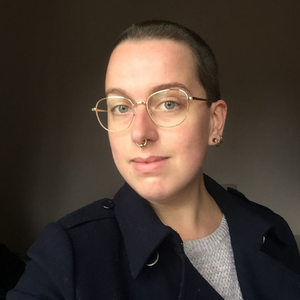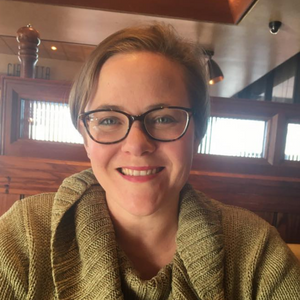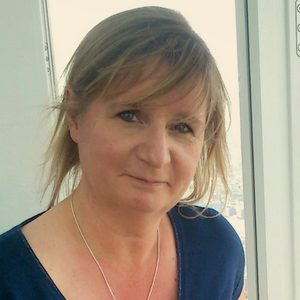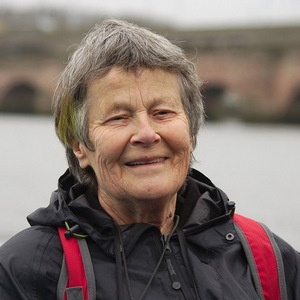Researching Autistic Communication Preferences
Holly Sutherland, Phd Candidate
Since the Centre for Practice Innovation was founded in 2014, Scottish Autism has been building a number of research collaborations with university partners in Scotland. In 2020 we were delighted to receive a PhD studentship from Medical Research Scotland in collaboration with the Salvesen Mindroom Research Centre (SMRC) at Edinburgh University. The work centers on effective communication between autistic people and is being undertaken by PhD Student Holly Sutherland. Share caught up with Holly to find out more.
Share: Holly, can you tell us a little bit about yourself and how you came to be interested in autism research?
I’m a linguist by training – my previous degrees were both in linguistics, where I looked at metaphor comprehension in autism. My research now is on social communication in autism more generally, though, and my work sits somewhere at the intersection of psychology and sociology.
I was diagnosed as autistic in early secondary school, but didn’t receive much formal support or explanation of what exactly that meant. So it was only when the topic of autism came up in my undergraduate lectures that I thought, “Oh, people have probably done some research on this, huh?” As it turns out, quite a lot of people have! I was fascinated by the insights the research provided into how my own (and other people, both autistic and non-autistic) brain worked, and why. At the same time, though, some of the research was very dehumanizing, or made me feel like it hadn’t really grasped what being autistic is like – and I felt that I had an opportunity, as an autistic researcher, to try and change that.
Share: Can you summarise the topic of the PhD for us?
That’s a hard one! The specific research questions I have keep changing, in response to the things I’m finding. But, broadly speaking, I’m looking at autistic social communication through a sociological lens rather than a medical one – trying to treat the autistic way of communicating as though it’s similar to a cultural difference, rather than a disorder or deficit. Hopefully, we can learn a bit more about how autistic people communicate using this approach, and then use these new insights to improve communication between autistic and non-autistic people.
Share: The research builds on existing work at the Salvesen Mindroom Research Centre. Can you tell us about that work and how you will be building upon that?
Some of the previous work by the SMRC has looked at how autistic people communicate with one another. They’ve found that not only do autistic people enjoy talking to other autistic people, but that autistic people talking to one another are actually as effective at transferring information as non-autistic people talking to one another. It’s only when you put autistic and non-autistic people together that the miscommunication starts.
Given we often think of autism as causing problems with communication, this finding is really interesting! It suggests that the problem is not with autistic people alone, but with the interface between autistic and non-autistic people (Damian Milton calls this “the double empathy problem”). So my work is taking this finding, and trying to work out why this is the case – what is it that’s causing difficulties between autistic and non-autistic people, and why doesn’t it cause difficulties with just autistic people?
Share: How will the partnership with Scottish Autism work, and how do you think your work will help to inform autism support practice?
The partnership with Scottish Autism is really exciting. It’s such a great opportunity to step outside the university environment and stay grounded in the real-world practicalities and potential impacts of my work. It also allows me to work directly with autistic adults with a learning disability, who are underrepresented in autism research.
Starting soon, I’ll be going into some of Scottish Autism’s day services to meet the people who use them, and the staff who work there. I’ll be working with input from staff and supported individuals to decide what further research activities (like interviews, focus groups, or arts-based methods) I do and how I do them. The results from that research will be used to produce some training materials for staff, designed to improve communication between staff and the autistic people they support. Then I’ll be assessing how well that training works.
The aim is to make this a really useful partnership for everyone. I get to benefit from the expertise of the autistic people and the staff that support them at Scottish Autism – and then Scottish Autism and the people who use their services get to benefit from me being able to synthesize that expertise into advice they can use!
Share: Have you already begun any data collection, and have you found anything interesting so far?
I have! I’ve run two focus groups, where I asked other autistic people about their own social communication and how they think it differs from non-autistic people. I was expecting people to talk about tone, words, body language etc., but there was very little discussion of that. Instead, people talked about (amongst a lot of things!) what I’ve called ‘strongly held principles’ – intuitions about how social communication should work, or what the purpose of it should be. These principles included things like conversations having a purpose, every relationship having a unique ‘language’ to it, the importance of social boundaries, and a unique definition of truth/honesty.
These principles are consistent between autistic people (or at least the ones involved in these two groups), but seem to be different to the intuitions non-autistic people have about social communication. This mismatch in intuitions may be a source of some of the difficulty autistic and non-autistic people have interacting with one another, which is a very interesting finding, and one that the future research at Scottish Autism will hopefully expand on!
Share: What do you hope will be the impact of this research in the longer term?
I really hope that, whatever I find, I end up producing something that’s real-world useful – not just to people working in autism support services, but to all professionals who interact with autistic people on a regular basis. I’d love it if I could make these interactions less stressful for autistic people, and less confusing for non-autistic people, by helping us all speak each other’s social languages a little better.
Beyond that, though, I hope modelling a research strategy that involves approaching autistic behavior on its own terms encourages more people to do the same. Given the history of autism research, a lot of the descriptive work we have about autism is very deficit-focused, or assumes that the non-autistic way of doing things is the best and only way. I’d like to see more research, especially focused on description and theory-generation, that takes autistic people as we are and asks the question, “What’s happening here?” rather than, “What’s wrong here?”.
Share: Thanks for sharing your work with us, Holly. We wish you luck and look forward to featuring your findings in a future issue!




